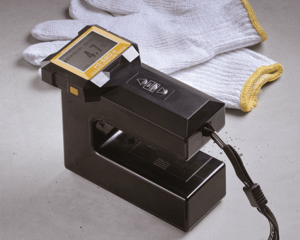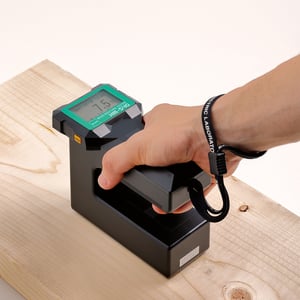 Using a moisture meter removes so much guesswork and approximation from daily tasks. With accurate readings and reliable tools like the ones we offer, it’s easy to have more uniform results in everything from grain storage to papermaking to woodworking, and even food packaging and beauty products manufacturing.
Using a moisture meter removes so much guesswork and approximation from daily tasks. With accurate readings and reliable tools like the ones we offer, it’s easy to have more uniform results in everything from grain storage to papermaking to woodworking, and even food packaging and beauty products manufacturing.
At Kett, we offer the highest quality in moisture meters, but with each one, there is still a series of best practices that will ensure you are getting the best reading possible every time. Here are some typical mistakes users make that can inhibit their ability to get accurate results time and time again.
Mistake #1: Using the Wrong Type of Meter for the Job
While there are countless moisture meters created specifically for each task, and while Kett offers a wide range of universal moisture meters as well, if you are attempting to use a moisture meter that was created for use on a specific material for something other than its intended purpose, chances are you are getting an inaccurate reading. Each meter serves a different function based on its calibration, and it’s important to use the correct one.
If you are using a wood moisture meter for paper packaging, its highly unlikely that your reading is correct, unless your meter offers a variety of calibrations or you have a reference scale that can help you estimate or adjust an approximate reading. Remember, if one moisture measurement method was "perfect" for all uses, there would only be one method or model available.
Instead of worrying about whether or not you are taking an accurate reading with an inaccurate tool for the job, it might be time to invest in a handheld near-infrared moisture meter, or a multi-purpose moisture tester, both of which can be calibrated to a multitude of materials for a better reading, which means better results for you every single time, no matter the material.
Mistake #2: Rushing Through Cleaning Your Meter’s Probes, or Not Cleaning Them At All
Life gets busy, and we get pressed for time in our day-to-day work tasks, but if you start to ignore the basic care and maintenance of your moisture meter, you can’t be sure that you will get accurate readings.
Any kind of contaminants on the meter can throw off a reading and give you incorrect results. Once you are finished using your meter at the end of the day (or immediately after each use, if you are using corrosive materials), take the time to clean and dry your meter to avoid damage or bad readings.
Mistake #3: Not Storing Your Moisture Meter Correctly
If you are in a hurry and don’t put your moisture meter away after each use, you are exposing it to the elements: cold weather, humidity, and corrosive chemicals or particulates in the air can wreak havoc on even the sturdiest meters on the market.
We recommend storing your moisture meter (after it has been properly cleaned) immediately after you have finished with it. This way, you are protecting it from harmful elements that could start to affect the accuracy of your readings.
Our cases are designed to help protect your meter from impact. A drop or collision is much less harmful to your meter if it is properly stowed in its custom case.
Mistake #4: Operator Error
There are many pitfalls in moisture meter usage that can give you inaccurate readings that can affect your results. One of the biggest? Operator error. Not checking your calibrations regularly, or not being trained on how to take primary readings correctly can have a big impact on all of your readings.
Even the most precise meters can start to lose their accuracy, and so it is vital to regularly check the calibrations of your meter especially for on-the-job readings, by using a reference meter or using calibration checks - especially for universal-type meters where you can have up to 10 different calibrations programmed. Each one needs to be checked regularly. Many of or meters include a factory standard just for this purpose!
Taking correct primary readings is key to accurate readings with any meter. Having the proper training to take a primary reading in the field, while dealing with air contaminants, humidity, and varying temperatures, and also knowing the ins and outs of the meter’s uses and functions cannot be stressed enough. Remember, a secondary test method (rapid, portable, instant, non-contact) is only as good, best case, as the data used to initially calibrate it. This data is generally gathered from the primary method (Loss on drying or Karl Fischer)
By gathering accurate primary readings, you can be confident knowing you are getting correct readings every single time. Check out this guide to the 6 Methods to Determining Moisture to be confident you are always using best practices with your moisture meter.
Have additional questions about how to best use your meter?
Contact us today to see how we can be sure you not only have the perfect tool for the job, but that it’s being used perfectly too. At Kett, we stand by the accuracy and reliability of our meters, and we are here to help you make the most of them.


